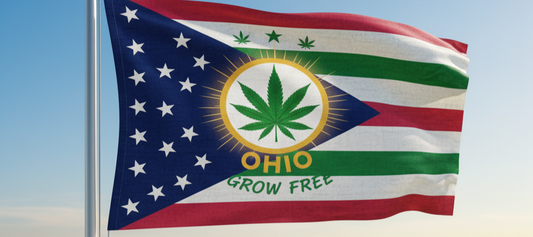Cannabis is a Luxury
Cannabis is a Luxury: The Paradox of a Plant
Walk into a modern cannabis dispensary today, and you might feel like you've entered a high-end boutique. Sleek glass cases display a rainbow of products—from gourmet edibles and artisanal chocolates to designer vape pens and boutique strains with exotic names. The price tags can be just as impressive, positioning cannabis as a true luxury good. But this vibrant, sophisticated market presents a powerful paradox: while cannabis is a luxury for some, it is a vital, non-negotiable medicine for others. The conversation about cannabis has to hold both truths at the same time, because for a person who needs it medically, access should never be a luxury.
The Boutique Experience: When Cannabis is a Luxury
There's no denying that the legal cannabis industry has embraced a luxury-minded business model. For recreational consumers, the plant is a form of self-care, a way to relax after a long day or enhance a social gathering. It’s an optional indulgence, a lifestyle choice. Products are sold with a focus on branding, aesthetics, and unique experiences. This market caters to a consumer who has disposable income and views cannabis as a premium product, much like a fine bottle of wine or a craft cocktail. This is a sign of progress, moving the industry out of the shadows and into a legitimate, thriving economy.
The Medical Reality: When Cannabis is a Necessity
For millions of people, however, cannabis is not an indulgence—it’s a lifeline. For a patient with severe epilepsy, a dose of CBD is not a luxury; it is a way to manage debilitating seizures. For a veteran with chronic pain or PTSD, a carefully selected strain is a form of pain management that might allow them to get out of bed in the morning. For those undergoing chemotherapy, it's a way to combat nausea and stimulate a life-saving appetite. For these individuals, the high cost of cannabis, the lack of insurance coverage, and limited access in their area are not minor inconveniences; they are significant barriers to their health and well-being. When a product is essential for a person's quality of life, it ceases to be a luxury and becomes a medical necessity.
Bridging the Gap: The Path to Equitable Access
The challenge for the cannabis industry is to mature in a way that serves both markets without neglecting the most vulnerable. A thriving recreational market can exist alongside a compassionate medical one, but it requires a conscious effort to separate them. Here are some steps we can take to ensure that medical cannabis is a right, not a privilege:
- Tax Breaks and Subsidies: Recreational cannabis is often heavily taxed, but medical cannabis products should be exempt. Government subsidies or grants could also help lower the cost for low-income patients.
- Insurance Coverage: Lobbying for insurance companies to cover cannabis-based medicine is a critical step toward making it accessible to everyone, not just those who can afford to pay out of pocket.
- Dedicated Medical Programs: States with dual markets should ensure that medical patients have priority access to products, lower prices, and dedicated dispensary hours or locations.
- Education and Research: Continued research into the efficacy of cannabis for various conditions is essential, as is a commitment to educating healthcare professionals about its benefits and applications.
Final Thoughts...
The polished storefronts and sophisticated branding of the cannabis industry can obscure a crucial truth: for many, this plant is not a luxury, but a fundamental part of their healthcare. A vibrant, recreational market is a sign of progress and an important economic driver, but true equity will only be achieved when we ensure that medical cannabis is treated as what it is—a necessity for those who need it most. The future of cannabis lies not in just creating a booming industry, but in building a compassionate one.





